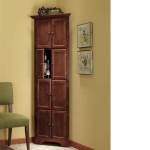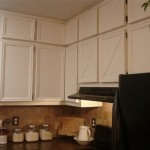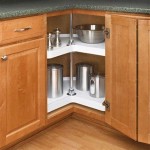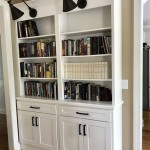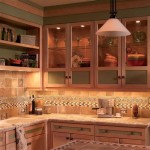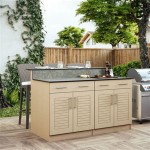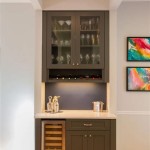Hardware Placement On Cabinet Doors: A Comprehensive Guide
The placement of hardware on cabinet doors is a crucial element in both the functionality and aesthetics of cabinetry. Precise and consistent placement not only ensures ease of use but also contributes significantly to the overall visual appeal of a kitchen, bathroom, or any room featuring cabinets. Incorrect or haphazard hardware installation can detract from the quality of the cabinets themselves and create a less than desirable final appearance. This guide provides a thorough explanation of the factors to consider when determining optimal hardware placement, covering various styles of hardware and providing general recommendations for achieving a professional and visually pleasing result.
Cabinet hardware encompasses a range of fittings, including knobs, pulls, hinges, and latches, each with specific functions and installation requirements. The selection of hardware is typically driven by personal preference and design style, but careful consideration must also be given to the size and style of the cabinet doors themselves. The weight of the door, its intended use, and the overall design of the room all play a role in determining the most appropriate type and placement of hardware.
Consistency and Standardization in Hardware Placement
Achieving a uniform and professional look requires a standardized approach to hardware placement. Consistency is paramount. This means adopting and adhering to a specific set of measurements for all cabinet doors, regardless of their location within the room. While minor adjustments may be necessary to accommodate specific door sizes or design considerations, the fundamental principles of consistent placement should always be maintained.
One common approach is to establish a fixed distance from the corner of the door to the center of the hardware. This distance can be measured from either the top or bottom of the door for knobs, and from both sides for drawer pulls. The specific measurement will depend on the size and style of the hardware, as well as the overall aesthetic being sought. However, once a measurement is chosen, it should be consistently applied to all similar cabinet doors.
Another important aspect of consistency is ensuring that all hardware is installed straight and level. Using a level or a laser level can help to achieve accurate alignment, preventing a crooked or unprofessional appearance. This is especially critical for longer pulls, where even a slight misalignment can be easily noticeable. Furthermore, using jigs and templates can help maintain consistent placement across multiple doors, saving time and improving accuracy.
In addition to horizontal and vertical alignment, attention should be paid to the depth of the hardware. Ensuring that the hardware sits flush against the door surface, without any gaps or protrusions, contributes to both the aesthetic appeal and the functional integrity of the installation. This may require adjusting the length of the screws used to secure the hardware, or using shims to compensate for any irregularities in the door surface.
Factors Influencing Hardware Placement
Several factors influence the optimal placement of hardware on cabinet doors. These factors include the size and style of the door, the type of hardware being used, and the overall design aesthetic of the room. Understanding these factors and considering them carefully can help to ensure that the hardware is both functional and visually appealing.
The size of the door is a primary consideration. Larger doors typically require larger or more substantial hardware to provide adequate grip and functionality. For example, a long pull may be more appropriate for a tall pantry door than a small knob. Conversely, small doors may look overwhelmed by oversized hardware. The scale of the hardware should be proportional to the size of the door.
The style of the door also influences hardware placement. For example, raised panel doors may require hardware to be positioned to avoid interfering with the raised panel detail. Similarly, shaker-style doors, with their simple and clean lines, may benefit from minimalist hardware that complements the style. The placement should enhance, not detract from, the door's design.
The type of hardware being used also dictates its placement. Knobs are typically centered on the door stile (the vertical frame member) or rail (the horizontal frame member), depending on the overall design. Pulls, on the other hand, can be positioned horizontally or vertically, depending on the orientation of the door and the user's preference. Some pulls may require specific spacing for screw holes, which must be taken into account when determining the placement.
The overall design aesthetic of the room should also be considered. Hardware should complement the style and color scheme of the cabinets, countertops, and other design elements. For example, a modern kitchen might benefit from sleek, minimalist hardware in a brushed metal finish, while a traditional kitchen might call for more ornate hardware in a warm brass or bronze finish. The goal is to create a cohesive and harmonious design.
Specific Considerations for Different Hardware Types
Different types of hardware require specific placement considerations to ensure functionality and aesthetic appeal. Knobs, pulls, hinges, and latches each have unique requirements that must be taken into account during installation. Ignoring these requirements can lead to functional issues, such as doors that are difficult to open or close, or aesthetic problems, such as hardware that appears out of place.
Knobs are generally the simplest type of hardware to install. They are typically centered on the door stile or rail, depending on the overall design. For base cabinets, knobs are often placed near the top corner of the door, while for upper cabinets, they are placed near the bottom corner. The specific distance from the corner will vary depending on the size of the knob and the overall aesthetic being sought. However, consistency is key. All knobs should be placed at the same distance from the corner on all similar doors.
Pulls offer more flexibility in terms of placement, but also require more careful consideration. They can be positioned horizontally or vertically, depending on the orientation of the door and the user's preference. For drawer pulls, the common practice is to center the pull horizontally on the drawer front. For cabinet door pulls, a typical placement is near the stile. The length of the pull should be proportional to the size of the door or drawer. Longer pulls often require two screws for secure attachment, so the spacing between the screw holes must be taken into account when determining the placement.
Hinges are crucial for the proper functioning of cabinet doors. They must be installed accurately and securely to ensure that the doors open and close smoothly. The type of hinge used will depend on the type of cabinet and the desired level of functionality. Concealed hinges, which are hidden from view when the door is closed, are a popular choice for modern cabinets. These hinges require precise mortising and alignment to ensure proper function. Exposed hinges, on the other hand, are visible when the door is closed and can add a decorative element to the cabinet. These hinges are typically easier to install, but still require careful alignment to ensure that the doors hang straight and level.
Latches are used to secure cabinet doors and prevent them from swinging open unintentionally. Magnetic latches are a common choice for frameless cabinets, as they provide a strong and reliable closure. Roller latches, on the other hand, are often used for framed cabinets, as they provide a smooth and quiet operation. The placement of the latch is crucial for its proper functioning. The latch must be aligned with the strike plate on the cabinet frame to ensure that the door closes securely. The strike plate should be positioned so that the door is held firmly in place when closed.
In conclusion, hardware placement on cabinet doors is a detailed process requiring careful consideration of multiple factors. Consistency, door size and style, hardware type, and overall aesthetic all contribute to the final result. By adhering to these guidelines, a professional and visually appealing installation can be achieved, enhancing the functionality and aesthetics of any cabinetry project.

Cabinet Hardware Placement Guide

Where To Place Cabinet Hardware Emtek Living Blog

4s And Skinny Narrow Shaker Hardware Placement Taylorcraft Cabinet Door Company

How To Install Cabinet Handles Straight Without Losing Your Mind

Cabinet Hardware Discover 8 Ideas From

Cabinet Hardware Installation Guide At Cabinetknob Com

A Designer S Guide To Hardware Placement

How To Install New Cabinet Hardware Blog Doorcorner Com

Hardware Placement

An Easy Cabinet Hardware Placement Guide Tidbits Twine
Related Posts


